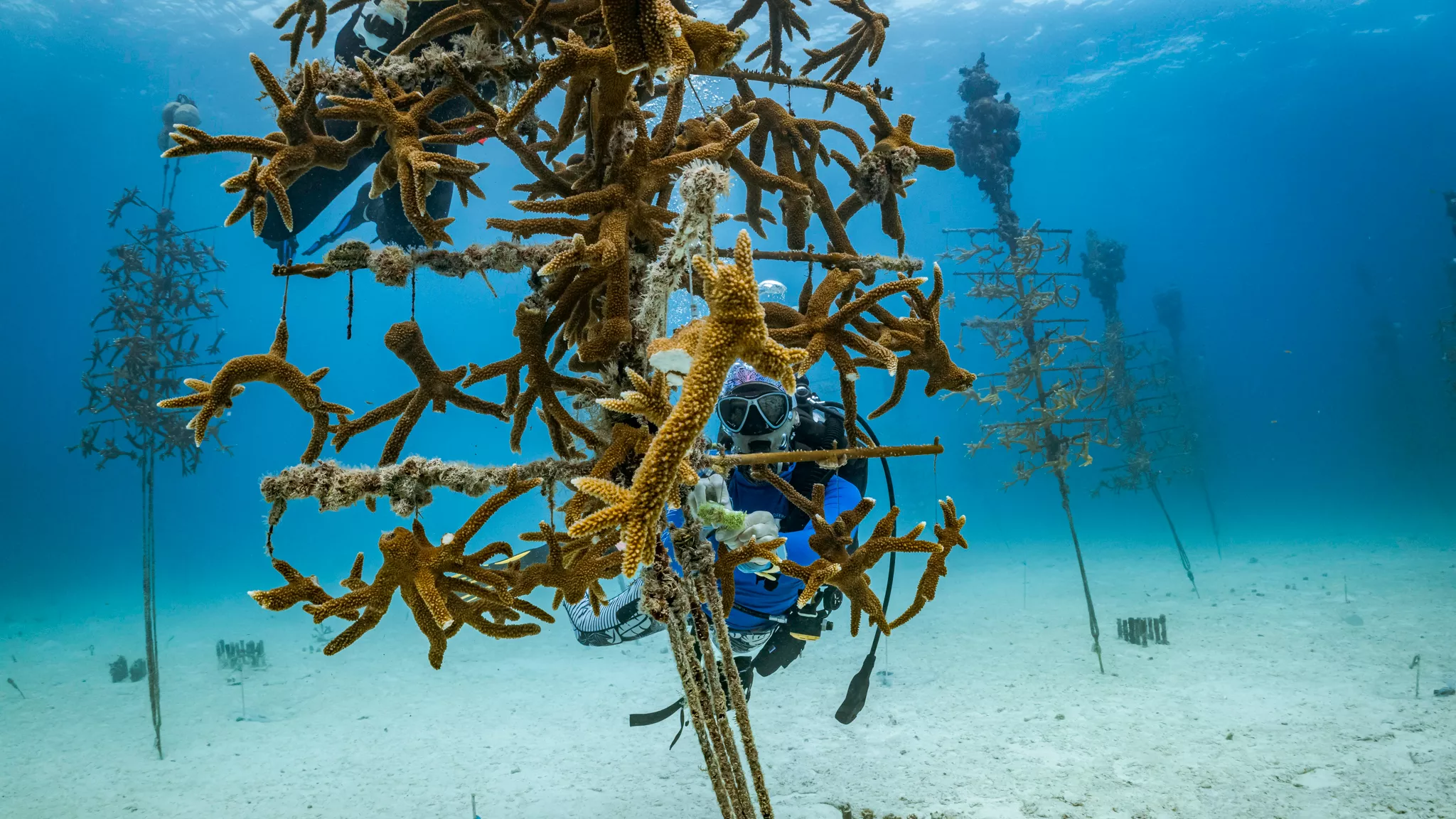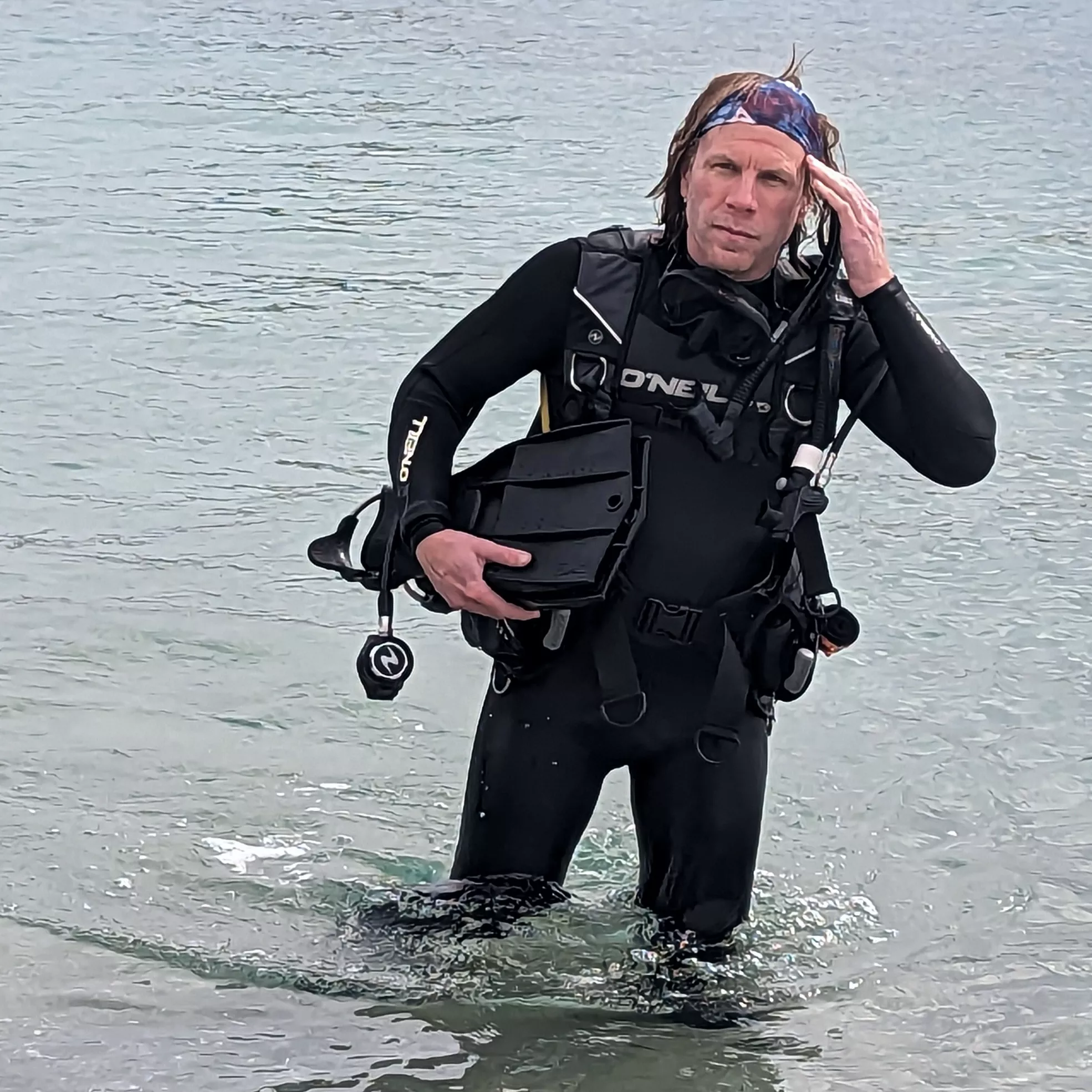
Photo and image from NOAA Coral Reef Watch
A Diver Checks in on a Coral Restoration Tree at a Coral Nursery in Florida.
The Advanced Baseline Imager (ABI) aboard the GOES-R satellite series and NOAA-20’s Visible Infrared Imaging Radiometer Suite (VIIRS) provide data on ocean surface temperatures by looking at the infrared radiation that is emitted from the ocean. NOAA’s Coral Reef Watch monitors this data and identifies areas at risk for coral bleaching. This allows coral reef managers to move corals to land-based nurseries when restoration and nursery sites are at risk of bleaching. The inset image shows the maximum degree heating weeks from January 1, 2023 to September 30, 2024.
Erick Geiger, NOAA Coral Reef Watch Scientist, NESDIS/STAR/SOCD

"Coral reef managers rely on Coral Reef Watch data for timely alerts related to coral bleaching risk due to heat stress. Over the past year, we developed single-pixel virtual stations that summarize the key bleaching risk metrics for individual reefs in US jurisdictions. In 2023, Florida experienced an unprecedented marine heatwave and the restoration community used these stations to cross-compare relative heat stress by site and determine when and where to do interventions, including rescuing corals and bringing them to land-based nurseries."
